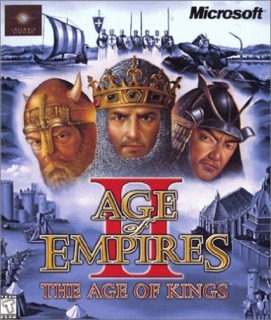A classic RTS that not only plays well, but makes learning history fun and immersive.
When I first heard Microsoft would be producing a sequel to Age of Empires, I had quite a few hopes for the title. Like most people who had played the original, I'd enjoyed the single player campaigns and the map editor even more. However, there had been vast room for improvement, so I was looking forward to seeing if the second game would learn its lessons from the first.
Did it ever.
While there were many new features in the gameplay alone that truly impressed me, it ended up being the same formula used in the original AOE that sold me on the sequel. First of all, I loved the immersive historical re-enactments offered in the myriad of single player campaigns - many of which actually taught me things I hadn't learned in school yet at the time.
For example; I had never heard of the Holy Roman Empire or Emperor Barbarossa. I had heard about Joan of Arc but I didn't know anything about her, and I knew most of the history around the Third Crusade but the game's campaign gave me further depth of understanding.
If any of you are sitting there thinking: "Yeah, but it's a game. They were probably really inaccurate" think again. While the maps may not have been completely accurate to 16th century Europe's geography - along with a few other minor inconsistencies - the overall historical information used was very accurate. Later on in my school years, when topics like the Hordes of Genghis Khan or Sultan Saladin's occupation of Jerusalem came up, I found 90% of what I was being taught had been covered in the game's lore.
Second in my list of appreciated features was the new map editor. I had just as much fun making all sorts of crazy scenarios in this game as I did with the original AOE. Probably even more so with all the new units and structures I had at my disposal.
Finally, there were the small features that I truly appreciated; formations paramount among them. Being able to take a group of spearmen, a group of swordsmen, and a group of archers and line them up behind one another in proper military formation not only offered tactical advantages - as they should - but also looked damn impressive at the time. There were also vast improvements in the game's pathfinding AI, so units would be less likely to get stuck in nooks and crannies on the map if their destination waypoint was set across the map. The enemy AI was also improved to make things more challenging for the player. Unfortunately, it still had many of the same suicidal tendencies seen in most RTS AIs of the time.
Now, to the flaws. While AOE II seemed to be free of the bugs and glitches that plagued the original, there was still room for improvement in other aspects of the game. There could have been much more diversity in the appearance of the individual units; archers fighting for King Richard and archers fighting for Sultan Saladin during the Third Crusade looked identical. Also, with the possible exception of the mobile trebuchet, most of the siege engines were not as effective as they could have been. All in all though, these small flaws did not tarnish the game's shine.
Age of Empires II was masterfully done in my opinion, even though it is an older game by today's standards it still has a lot of replay value. I would even go so far as to recommend it as a good learning tool for history teachers to use if they want a fun way for their kids to research our past.
**DISCLAIMER: This review was originally posted on 26 May 2006 under the user name TheSergeant. I have since closed that account in favour of my current one and re-posted my earlier contributions with minor spelling and informational edits.**

